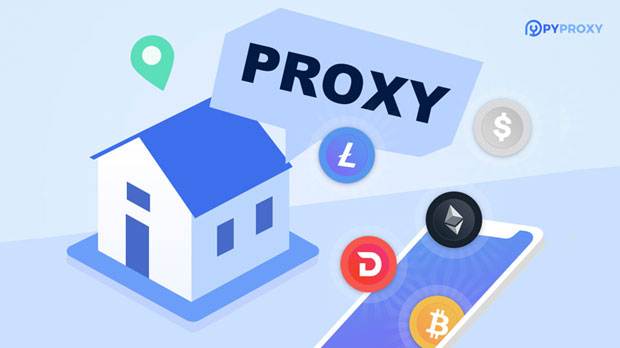Web scraping has become a vital technique for data collection, research, and automation. However, web scraping tools often face hurdles like IP blocking, CAPTCHA challenges, and other anti-bot measures when accessing certain websites. PYPROXY, a proxy management tool, can be a game-changer when combined with Selenium, a powerful web automation framework. This article explores how to use PyProxy and Selenium together for anti-detection web scraping, ensuring that web scrapers remain undetected while accessing the necessary data. Understanding PyProxy and SeleniumBefore diving into how PyProxy and Selenium can work together for web scraping, it’s essential to understand the purpose and functionality of these two tools individually.PyProxy Overview:PyProxy is a Python library that facilitates the management of proxy servers, helping users bypass restrictions such as IP blocking or geolocation-based limitations. It automates the process of rotating proxies to keep the web scraping session active without detection. PyProxy can handle proxy lists, rotation, and other configurations to ensure anonymity and prevent detection.Selenium Overview:Selenium is an open-source automation tool that allows interaction with web browsers. It is widely used for automating browser actions, such as clicking buttons, entering text, and navigating between pages. It is particularly useful for scraping dynamic websites, where data is rendered using JavaScript. Since Selenium simulates human interactions, it can evade basic anti-scraping mechanisms like static IP detection or header inspection.How PyProxy and Selenium Can Bypass Anti-Scraping MeasuresWebsites employ various anti-scraping technologies such as IP blocking, fingerprinting, CAPTCHA, and rate-limiting to prevent bots from accessing their data. When using Selenium for scraping, it is important to ensure that the browser behavior mimics a real user as closely as possible to avoid detection. PyProxy, in conjunction with Selenium, can assist in evading these anti-scraping measures by rotating proxies and managing browser traffic in a way that resembles human behavior.1. Proxy Rotation to Avoid IP BlockingOne of the primary anti-scraping techniques websites use is IP blocking. Websites monitor the number of requests from a single IP address and block it once the limit is exceeded. This is where PyProxy comes into play. By integrating proxy rotation with Selenium, you can automatically change the IP address after each request, making it difficult for websites to identify and block the source of the scraping activity.To integrate PyProxy with Selenium, you can configure Selenium to use a different proxy server for each session. PyProxy will manage this process by selecting a proxy from a list and configuring the Selenium WebDriver to use it.2. Overcoming CAPTCHA with Proxy RotationAnother common challenge when scraping websites is dealing with CAPTCHA. CAPTCHA systems are designed to detect automated bots and stop them from accessing a site. By rotating proxies with PyProxy, the chances of triggering CAPTCHA become lower. The proxy rotation ensures that a different IP address is used for each request, reducing the likelihood of triggering CAPTCHA systems associated with repeated access from the same IP.3. Mimicking Human Behavior to Avoid FingerprintingFingerprinting involves tracking various elements of a user's device and browser, such as screen resolution, operating system, and browser version, to identify and block bots. By rotating proxies and managing various browser configurations using Selenium and PyProxy, you can simulate different environments, making it harder for websites to track the scraper.Selenium allows the customization of browser profiles, and combined with PyProxy’s ability to rotate proxies, you can create a new browser profile with every session, simulating different users. This approach helps avoid detection through fingerprinting.Implementing PyProxy and Selenium for Anti-Detection Web ScrapingNow, let’s break down the steps to implement PyProxy with Selenium for web scraping while ensuring that detection mechanisms are avoided.Step 1: Install Required LibrariesTo get started, you need to install PyProxy, Selenium, and a web driver like ChromeDriver. PyProxy manages proxies, while Selenium automates the browser.```bashpip install selenium pyproxy```Ensure you have the appropriate web driver installed and configured on your system.Step 2: Set Up PyProxyAfter installing PyProxy, you need to configure it to rotate proxies effectively. PyProxy supports the use of multiple proxy types (e.g., HTTP, HTTPS, SOCKS5) and can handle proxy rotation automatically. You can create a proxy pool by specifying a list of proxy addresses, and PyProxy will randomly select an available proxy for each web scraping request.```pythonfrom pyproxy import ProxyManager Set up the proxy poolproxy_manager = ProxyManager(proxies=["proxy1:port", "proxy2:port", "proxy3:port"])```Step 3: Integrate PyProxy with SeleniumOnce PyProxy is configured, you need to integrate it with Selenium to control the browser’s proxy settings. When a new browser session starts, PyProxy will assign a proxy to Selenium, which will then make requests through that proxy.```pythonfrom selenium import webdriverfrom pyproxy import ProxyManagerfrom selenium.webdriver.common.proxy import Proxy, ProxyType Initialize ProxyManagerproxy_manager = ProxyManager(proxies=["proxy1:port", "proxy2:port", "proxy3:port"]) Select a proxy from the poolproxy = proxy_manager.get_proxy() Configure the Selenium WebDriver to use the selected proxyproxy_config = Proxy()proxy_config.proxy_type = ProxyType.MANUALproxy_config.http_proxy = proxyproxy_config.ssl_proxy = proxycapabilities = webdriver.DesiredCapabilities.CHROMEproxy_config.add_to_capabilities(capabilities) Launch the browser with the configured proxydriver = webdriver.Chrome(desired_capabilities=capabilities)```Step 4: Automate Interaction with WebsitesNow that the proxy configuration is in place, you can use Selenium to automate interactions with the website. You can navigate between pages, click buttons, fill out forms, and extract data, all while rotating IPs to stay under the radar of anti-scraping systems.```python Automate interaction with the websitedriver.get("https://example.com") Perform your scraping actions here, such as extracting content, clicking buttons, etc.```Step 5: Handle CAPTCHA ChallengesAlthough rotating proxies significantly reduce the chances of encountering CAPTCHA, there may still be instances where a CAPTCHA challenge appears. In such cases, manual intervention or an automated CAPTCHA-solving service may be required.Best Practices for Effective Anti-Detection Web ScrapingTo ensure that your web scraping activities remain undetected and effective, consider the following best practices:1. Respect Website Terms of Service Even though you may be bypassing anti-scraping measures, it's crucial to respect the website's terms of service. Web scraping can lead to legal issues if done improperly or excessively.2. Monitor Proxy Performance Keep an eye on proxy health and performance. Ensure that the proxies you are using are not blacklisted or slow to respond, as this can affect scraping efficiency.3. Rotate User-Agent Strings In addition to rotating proxies, consider rotating User-Agent strings to further mimic human behavior and avoid detection by sophisticated anti-bot systems.4. Implement Delay Between Requests Introducing random delays between requests can simulate natural browsing patterns and reduce the likelihood of detection.ConclusionBy combining PyProxy with Selenium, you can efficiently overcome various anti-scraping mechanisms, such as IP blocking, CAPTCHA, and fingerprinting. Proxy rotation helps maintain anonymity and keeps the scraping process smooth, while Selenium ensures that dynamic content can be extracted from JavaScript-heavy websites. When implemented correctly, this combination of tools can make your web scraping activities more effective and less prone to detection.
Apr 03, 2025
![arrow]()




























































